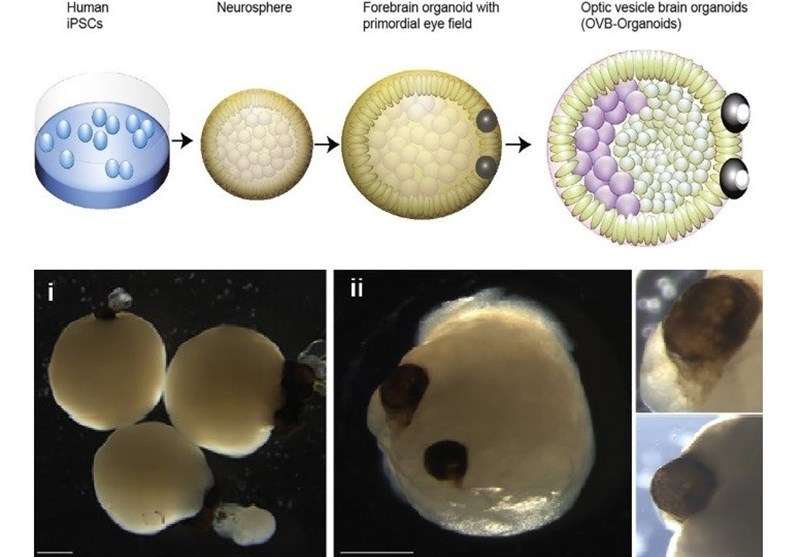Lab-Grown Brain Organoids Develop Eye-Like Structures
TEHRAN (Tasnim) – Stem cell-grown brain organoids displayed spontaneous development of primitive eye structures resembling those in human embryos, a significant discovery outlined in a 2021 scientific paper.
On cultivated human brain organoids, scientists observed the growth of two bilaterally symmetrical optic cups, mirroring the early development of eye structures in human embryos, according to ScienceAlert.
"This development underlines the remarkable capability of brain organoids to generate rudimentary sensory structures resembling those found in the body," highlighted neuroscientist Jay Gopalakrishnan from University Hospital Düsseldorf, Germany.
Gopalakrishnan emphasized the potential for these organoids in understanding brain-eye interactions during embryonic development, modeling retinal disorders, and producing patient-specific retinal cell types for tailored therapies.
Brain organoids, though resembling brains, are three-dimensional structures cultivated from induced pluripotent stem cells and lack thoughts, emotions, or consciousness.
Primarily used for research where using living brains would be challenging or ethically sensitive, these 'mini brains' aid in drug testing and observing cell development under specific conditions.
In a departure from past studies, Gopalakrishnan's team integrated optic structures within brain organoids to observe the co-growth of these tissues, aiming for a comprehensive understanding of their development.
"Our work focuses on optic vesicles, the precursors to the eye, crucial for proper eye formation and potential molecular insights into early retinal diseases," noted the researchers.
Modifying their protocols, the team nurtured brain organoids with retinol acetate, leading to the formation of optic cups within 30 days and clear visibility at 50 days, replicating human embryo eye development timing.
Significantly, these optic cups comprised diverse retinal cell types, forming neural networks responsive to light and even contained lens and corneal tissue. Moreover, they exhibited retinal connections to brain tissue, a phenomenon never previously demonstrated in vitro.
"In our reproducible model, nerve fibers from retinal ganglion cells connected with brain targets, an unprecedented achievement," Gopalakrishnan stated.
With 73 percent of 314 grown brain organoids developing optic cups, the team aspires to enhance their viability for extensive research, foreseeing potential applications in modeling retinopathies and personalized organoid generation for transplantation therapies.
Their findings propose a new frontier in organoid research, potentially modeling retinal disorders emerging from early neurodevelopmental complications.





